I found a great early season striper spot on Google Earth the other day. The area featured a sand bar, which extended off a point, into a channel with current, where the bottom plummeted from 4 feet to 20 feet deep.
To make it even better, there was a shallow bay on the other side of the sand bar and a herring run nearby. This is just one of many spots I can't wait to fly fish this spring, and I'm having fun discovering others.
Are you also looking for new places to fly fish for striped bass this spring on Cape Cod? If you are, then this post is for you!
Below are 8 of my favorite places to fly fish for striped bass on Cape Cod during the spring.
Sand Bars
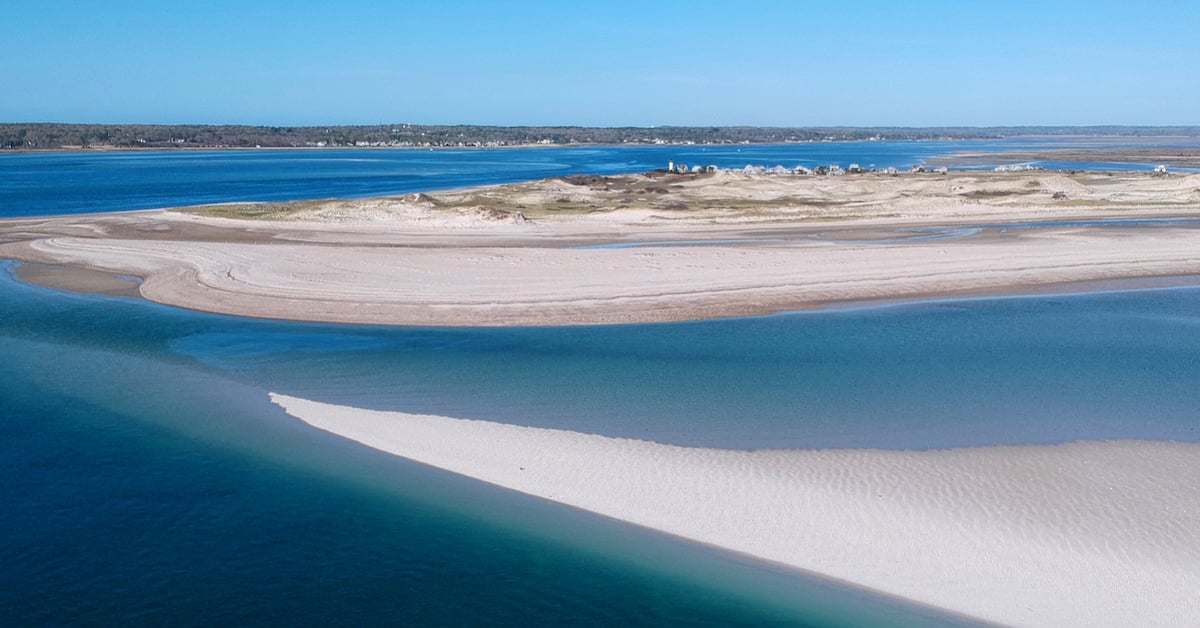
Due to a fairly limited casting range, fly fishers want to try and get as close as possible to fish holding areas. One way to do this is to walk out on the dry part of a sand bar, then wade out as far as you can go.
Sand bars are easiest to find and are most visible at low tide. Oftentimes it's possible to wade all the way out to deeper water.
Bass will hang in this deeper water, right at the edge of the sand bar during low tide. Just make sure to keep an eye on how your exit point is being affected by a rising tide. You don't want to get stranded!
Creeks & Rivers
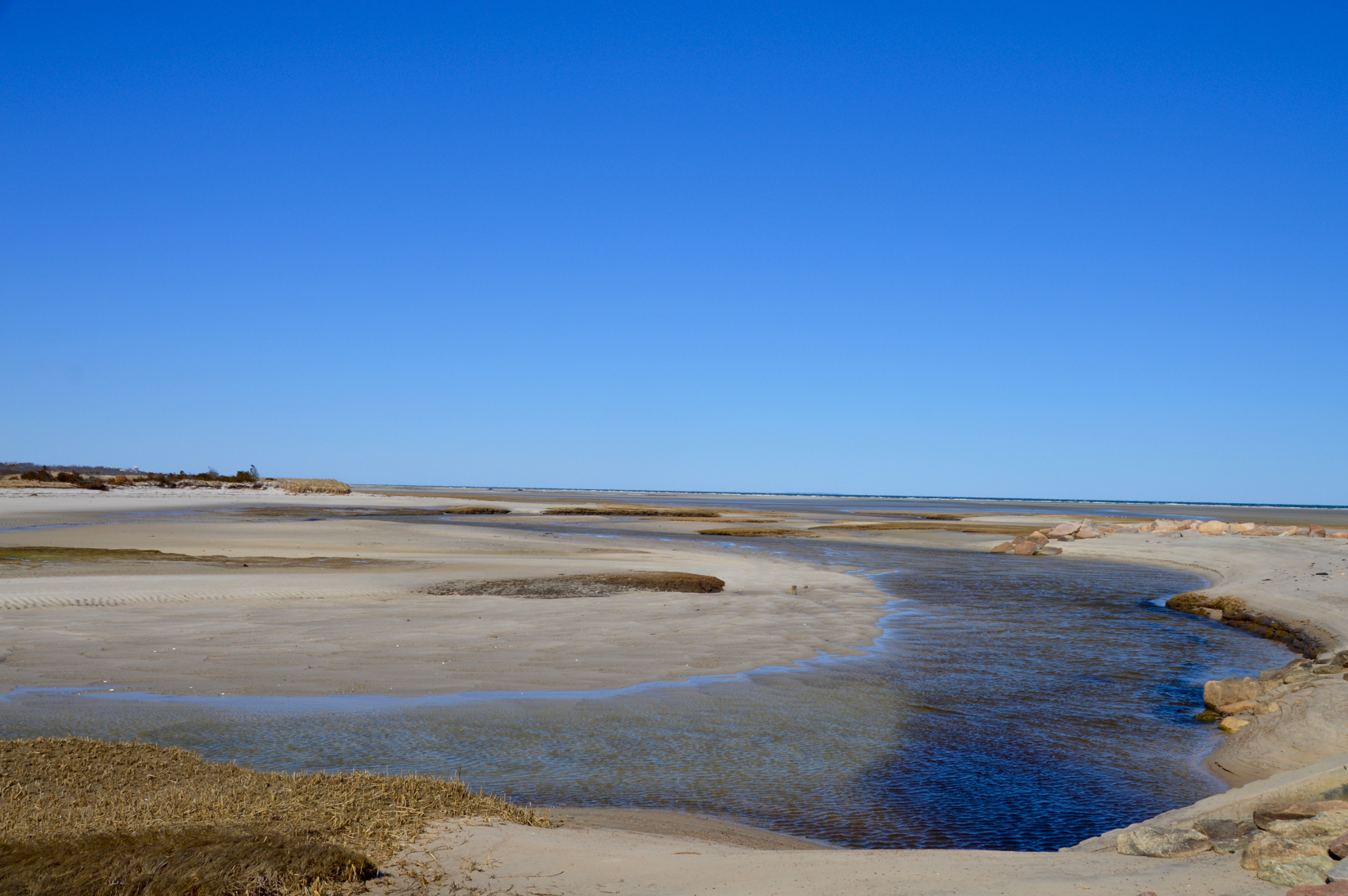
The heat of the sun has an immediate impact on creeks and rivers, more so than the open ocean. Creeks & rivers are also warmed by the surrounding land, which can warm faster than the ocean
While this is a detriment during the summer, it can draw fish to these areas in the Spring. Creeks and rivers often have dark muddy bottoms that will warm faster than sand. These are also the areas where you can sometimes find holdover stripers.
Many creeks & rivers are smaller in scale contrasted to the wide open beachfront. This suits fly casters well.
Outflows
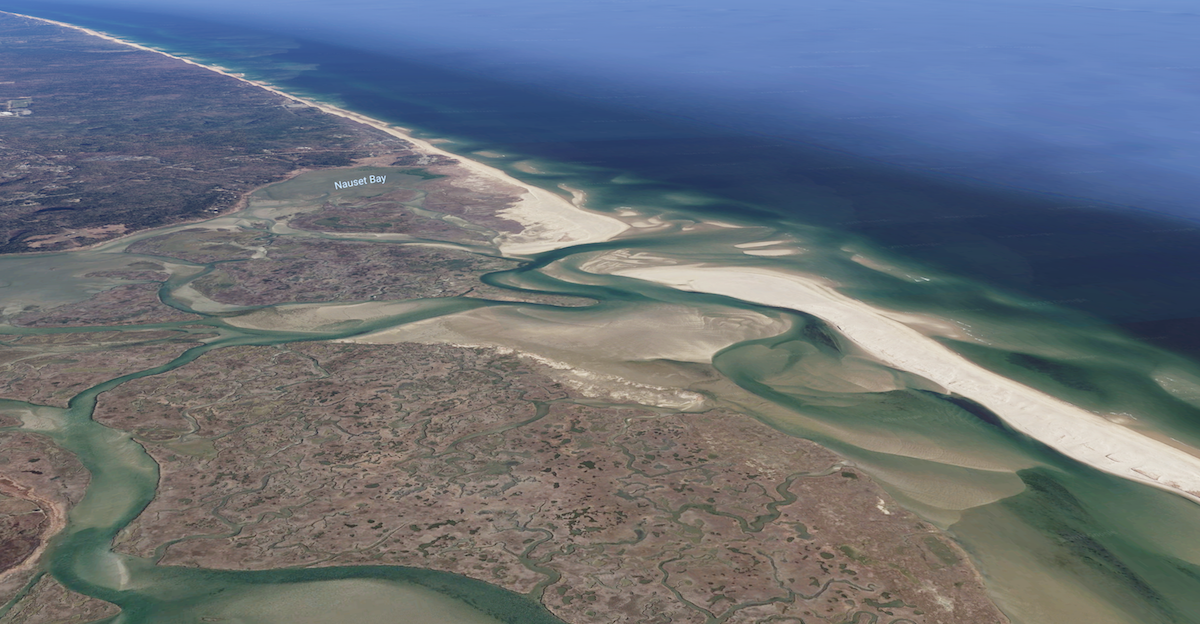
Many saltwater ponds, and small estuaries open to the ocean. During the Spring, the outgoing tide dumps warm water through the outflow and into the ocean. This influx of warm water can attract bass, and cause them to gather near the mouth of the pond or estuary.
The current from the outflow will continue along the beach and can bring fish in almost like a chum slick does. You can see the current moving alongside the beach in calm conditions. You can also often find productive fishing upstream from the outflow. Look for holes and undercut banks.
If you are fishing during an outgoing tide, the water around you may soon become too shallow to hold fish. If you walk up current a significant distance, you may find deeper water than you may expect, but remember that the tide starts/ends later, the farther you get from the ocean.
The upper reaches of some tidal creeks are a full 2 hours behind the tide at the outflow.
Marsh Banks
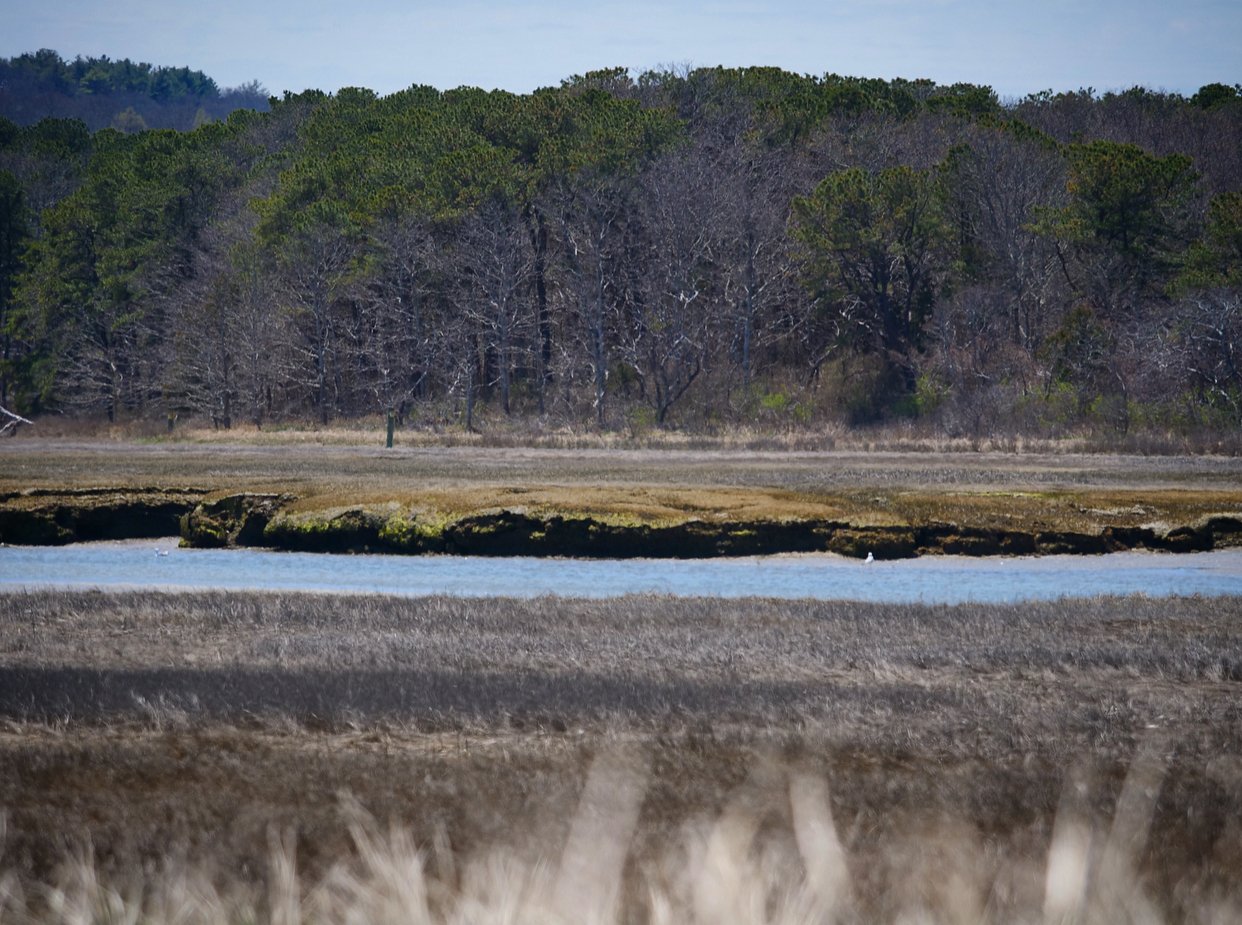
Marsh banks can be found in estuaries and are good bass holding structure, particularly at high tide.
Often pieces of the bank will be out in the deeper water as well.
Marsh banks are like a soft structure boulder field. They can be productive at night later in the season, especially if they are near deeper water.
Saltwater Ponds
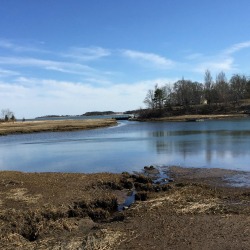
Saltwater ponds that are connected to open water will warm quickly, attract baitfish and subsequently striped bass.
This pond has an outflow to a large estuary that you can see at the top of the photo. Spring is the time to fish these areas as they will be too warm and too crowded during the summer.
Edges of Flats
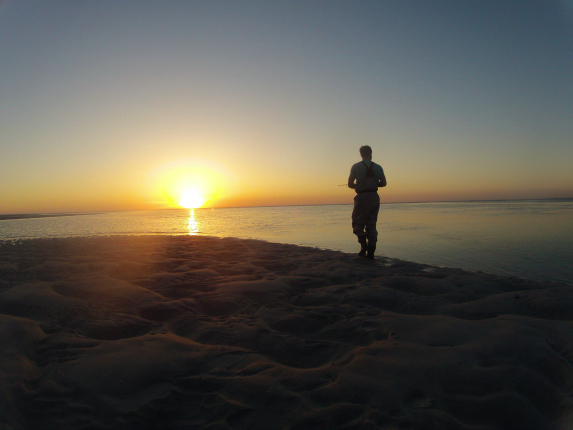
On Cape Cod there are many extensive shallow water turquoise flats that lead out to deeper blue water. I am often able to wade out to the edge of these flats to access the deep water at low tide.
These are areas where bass will hang out, waiting for the tide to rise, so they can move up onto the flat. Make sure you get off the flat in time if the tide is rising.
The bottom is often irregular on flats, and you don’t want to get caught on the wrong side of a deeper section as the tide comes in.
Herring Runs
Herring runs can cause bass to gather in concentrated numbers within reach of fly casters.
The presence of a herring run can positively impact many places nearby, not just the area in the immediate vicinity.
Flies that simulate herring are large and can be difficult to cast, but a good alternative would be a Deceiver with some blue in it.
Intercept Points
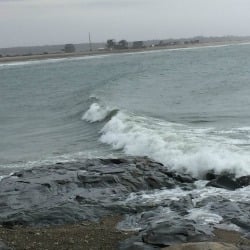
This rock formation is on the side of a wide shallow cove. Shallow coves will warm early and bass will move into these areas in the Spring.
A rock formation such as this will allow you to intercept the fish as they move from the deeper water into the shallows. I was fly fishing from these rocks one May having a blast catching small stripers.
All of a sudden I saw several large dark shapes moving quickly through the water. The schoolie I was bringing in started acting strangely and I soon found out why.
A large Bluefish had come by and chomped off it’s tail.
Helpful Concepts
- Look for areas that warm quickly, such as shallow estuaries, saltwater ponds, flats and back water areas that are surrounded by land mass and are away from the open ocean.
- Look for features that will let you get close to the fish. Even the best fly fisher is fairly limited in the distance they can cast.
- Fish will be holding in deeper water near the shallow areas. Look for edges of flats, undercut banks, fingers and troughs of deeper water.
- Look for intercept points such as the end of sandbars, rock formations that stick out, piers, docks, and jetties.
- Areas with muddy bottoms, especially with black mud, will warm first.
- Use Google Earth to scout out areas online. Physically scout areas now at low tide, before the biomass of striped bass (which is just to the south of us) arrives back here on Cape Cod.
Tight loops! 🎣


Dex, outstanding and very useful information. Should be required reading for all surf fishermen.
Thanks Mike,
Tom and I found biting fish a few nights ago by moving into an estuary where presumably the water was a bit warmer. No fish caught out front. This time of year water temp and bait presence is a big part of the strategy. Congrats on getting on the board for 2024!
Ryan,
You did a great job updating this article from when it first came out in 2015. I like the new look!
Glad you like it Dex. My pleasure. 👍
Hey Guys,
I lived on the cape many years ago and worked as a vet in Harwich/Chatham. Bringing my wife back to see my old moves on the island – we will have 2 days in chatham and 2 up in Ptown. Would love to get a guide in or at worst, shoot me a couple of safe havens and ill bring my own rod… Or actually I will buy one on my way out that way. thanks!
Hey Nick ??
I can do shore guided trips for fly fishermen and traditional spin fishing.
Send me an email at [email protected] and if things work scheduling-wise, I would be happy to take you out.
Tight lines ?
Hi, I’m heading out from the Berkshires Friday afternoon . Wondering if you could suggest any areas to hit with the fly rod . I caught my first striper last spring thanks to this site and am hoping to get into more. Thanks any help is appreciated.
Nice Justin! Right now is a great time because most of the Cape’s beaches seem to be producing fish.
I would focus on the Cape Cod Bay side beaches or the Outer Cape Cod beaches. Both have been producing fish.
Low tide in Barnstable, Chapin Beach or off Brewster can also be a fun flats fishing experience.
Hi Justin,
Send me a PM about where you’ll be on the Cape. I’m sure we can find some spots that would be productive for you.
Nice concise refresher. Hitting Block for a long weekend.
Great quick reference.
Thanks Charlie,
Do you think the bass have reached the Block yet? Now that I’ve fished Cuttyhunk, Block Island is my next new spot to visit. Plus, Betsy wants to go cycling there.
Very informative. Thanks.
Thanks Jay,
For more information about saltwater fly fishing go to https://myfishingcapecod.com/fly-fishing-101/
Good article Dex, you pointed out a couple of areas I was not aware of for Flyfishing , I can’t wait to get out and tighten the line on a keeper !
Thanks Brian,
The bass will be here soon. I just want to feel something pull back!
Good info Dex. A piece on back casting would help many CC fly fishers. Wind always seems a constant in the spring.
Great Question Dave,
Wind can be a problem, particularly when casting bigger flies. The best way to combat wind is to make your loop as small and tight as possible. The size of your loop is the direct result of the length of the “speed up and stop” part of your cast. Keeping the “speed up and stop” short will keep your loop smaller. When I have wind at my back I vary the angle of my cast so the fly goes lower on the back cast and higher on the front cast. That way the fly cuts under the wind in the back and really sails when I let it go in the front. You do the reverse if the wind is in your face.
If you are right handed you have to be careful if the wind is blowing from right to left. The fly can hit you in the eye during your back cast. In this situation I will turn around so my back is to the water I am casting to. My front cast then goes towards the shore and I release the fly towards the water on my last back cast.
I will be putting together a video on casting technique and how to improve your casting soon. Watch the MFCC website for this and other reports.
Great post Dex! Can’t wait to trade up my 5wt for the 8wt.
Thanks Ryan,
“Saltwater Fly Fishing 101” has some information that might help you in choosing a new rod.
Thanks James,
Intermediate line can be used for a wider variety of situations than floating or sinking line. Floating line is best for using poppers and gurglers on the surface. You can keep different types of fly line on an extra spool that’s all set up with backing and a tippet. When you want to change lines just pop one spool off and put on the new one. It’s very simple.
You might enjoy “Saltwater Fly Fishing 101 with Dex Chadsey”. You can find it in the blog section of the MFCC website. Just scroll down from the most recent post and you should be able to find it.
Awesome Post Dex! Very helpful. I started saltwater fly fishing on the cape last year and I am still trying to get the hang of it. I used a floating line all last year and have been doing some research and saw that an intermediate line might be better. Would you recommend a floating or intermediate line for fishing on the cape?
Thanks!
Thanks Ryan,
The last several weeks I have been scouting out productive areas. I can’t wait to use that information once the Bass arrive!
Thanks for contributing Dex. Nicely done!